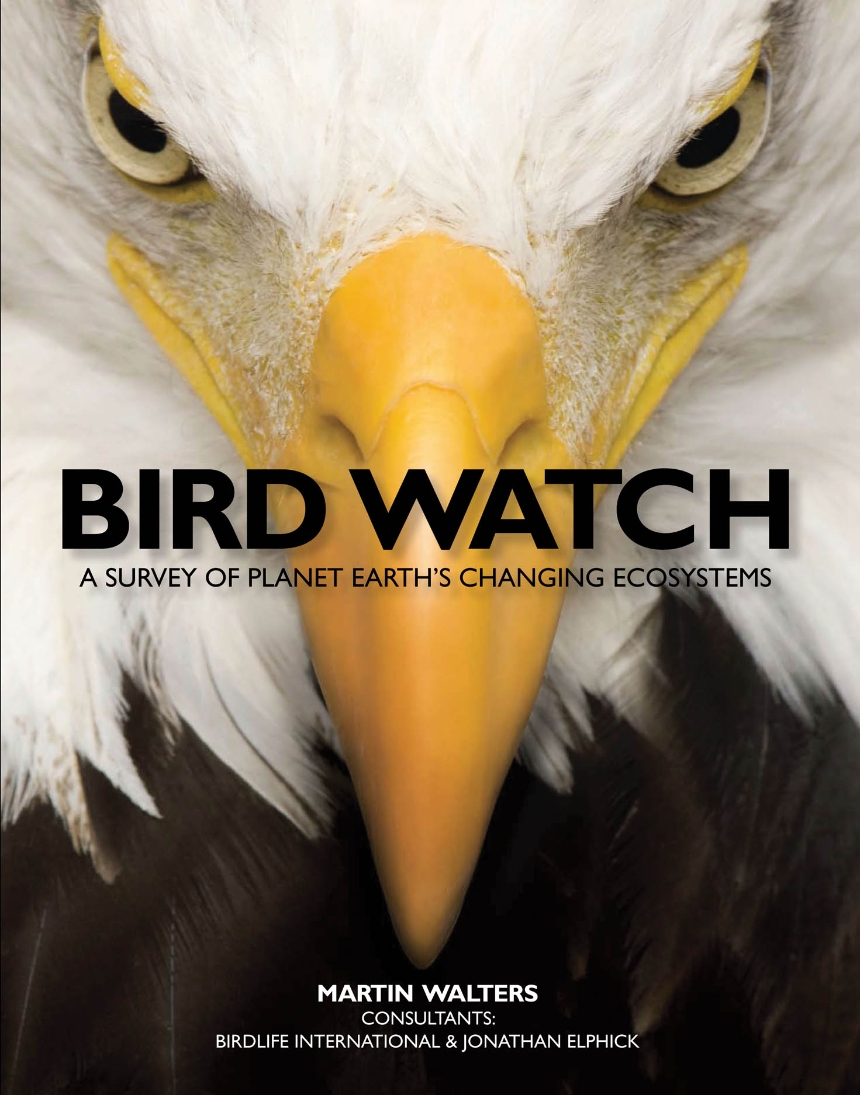Bird Watch
A Survey of Planet Earth’s Changing Ecosystems
From the tufted puffin in the Pacific Northwest to the hook-billed hermit in the Brazilian rainforest, birds suffer from the effects of climate change in every corner of the globe. Scientists have found declines of up to 90 percent in some troubled bird populations and unprecedented reproductive failure in others. The most recent studies suggest dire prospects: 1,227 avian species are threatened with extinction and an additional 838 near-threatened species are urgent priorities for conservation action.
As much an indispensable guide as a timely call to action, Bird Watch is an illustrated tour of these endangered birds and their habitats. Encyclopedic in scope, this book features all 1,227 species on the International Union for Conservation of Nature (IUCN) Red List, thoroughly detailing the environmental pressures and conservation prescriptions that hold their futures in the balance. After introducing readers to the main threats to birds and regions at high risk, Bird Watch presents a visually stunning and scientifically accurate flight over the major bird habitats, including tropical forests; temperate and northern forests; deserts; mountains; grasslands; and Mediterranean, marine, freshwater, and oceanic islands. The volume concludes with an overview of bird species by region—categorized by family within each region, and a guide to the world’s best birding sites. Produced in cooperation with BirdLife International, Bird Watch is a celebration of the beauty and diversity of birds and their habitats—and a warning of the dangers they face around the world.
See sample pages (PDF format).
256 pages | 1000 color plates | 8 1/2 x 11 | © 2011
Biological Sciences: Conservation, Ecology, Natural History
Table of Contents
THE THREATS TO BIRDS
Bird Distribution
Threats to Wild Birds
Threats to Habitats
The World Bird Database
HABITATS
Worldwide Habitats
TROPICAL FOREST
Major Tropical Forests
Habitat Focus: Lowland Atlantic Forest of Brazil
Tropical Forest Endemic Bird Areas
Conservation Story: Philippine Eagle
Threatened Birds of South and Central America
TEMPERATE AND NORTHERN FOREST
Major Temperate and Northern Forests
Habitat Focus: Western Himalayas Endemic Bird Area
Conservation Story: Spotted Owl
DESERT
Major Deserts of the World
Conservation Story: Houbara Bustard
MOUNTAIN
Mountain Ranges
Habitat Focus: The East Usambara Mountains of Tanzania
Conservation Story: California Condor
GRASSLAND
Grasslands Around the World
Habitat Focus: Serengeti Plains/Masai Mara
MEDITERRANEAN SCRUB AND HEATHLAND
Types of Scrub and Heathland
Habitat Focus: Australian Mallee
WETLAND AND COAST
Wetlands of the World
Habitat Focus: Endangered Cranes
Conservation Story: Kakadu National Park
Conservation Story: Rare Birds of the Andean Lakes
ISLAND
The Threats to Island Birds
Conservation Story: Success in the Seychelles
Oceanic Islands
Conservation Story: New Caledonia
ENDANGERED BIRDS
The Bird Profiles
Kiwis, Tinamous, and Cassowaries
Penguins
Grebes
Albatrosses
Petrels and Shearwaters, Strom-petrels and Diving-petrels
Pelicans, Gannets and Boobies, Cormorants, and Frigatebirds
Herons and Egrets, Storks, Ibises and Spoonbills, Shoebill, and Flamingos
Ducks, Geese, and Swans
New World Vultures and Old World Vultures
Kites, Harriers, Honey-buzzards, and Falcons
Hawks
Eagles
Peafowl, Pheasants, and Tragopans
Partridges, Francolins, Quails, and Allies
Guineafowl, Megapodes, Guans, and Curassows
Cranes
Rails, Crakes, and Allies
Bustards, Buttonquails, Plains-wanderer, Kagu, Mesites, and Finfoots
Plovers, Sandpipers, Stilts, Oystercatchers, Coursers, and Pratincoles
Gulls and Terns, and Auks
Doves and Pigeons
New World Amazons and Macaws
New World Parrots, Parakeets, and Parrotlets
Old World Cockatoos, Lorikeets, and Parakeets
Old World Parrots
Cuckoos and Turacos
Typical Owls
Barn Owls, Nightjars, Owlet-Nightjars
Swifts and Hummingbirds
Trogons, Kingfishers, Hornbills, Ground-rollers, and Motmots
Woodpeckers, Toucans and Barbets, and Jacamars
Broadbills, Scrub-birds, and Ovenbirds
Antbirds
Antpittas, Pittas, Woodcreepers, New Zealand Wrens, and Asities
Tyrant-flycatchers
Manakins, Cotingas, and Tapaculos
Swallows and Martins, Larks, and Pipits
Bulbuls, Bush-shrikes and Helmet-shrikes, Cuckooshrikes, Vangas, Shrikes, and Leafbirds
Wrens, Nuthatches, Dippers, and Tits
Thrushes, Mockingbirds and Thrashers
Babblers and Parrotbills, and Rockfowl
Old World Warblers, Cisticolas and Allies, and Gnatcatchers
Chats and Old World Flycatchers, Australasian Wrens, Bristlebirds, and Wattle-eyes
Monarchs, Thornbills and Gerygones, Fantails, Shrike-thrushes, and Australasian Robins
White-eyes
Honeyeaters, Sunbirds, Flowerpeckers, and Pardalotes
Buntings, American Sparrows, and Allies
Tanagers and Allies
New World Warblers
New World Blackbirds and Vireos
Finches
Waxbills, Munias, and Allies, and Weavers, Fodies, and Allies
Starlings, Orioles, Drongos, and Birds of Paradise
Crows and Jays, and Wattled Crows
CONSERVATION
Conservation Works
Saving Seabirds
Invasive Species on Islands
Conserving Forest Birds
What is BirdLife?
Preventing Extinctions Program
Birdwatching Hotspots of the World
Glossary
Index
Acknowledgments
